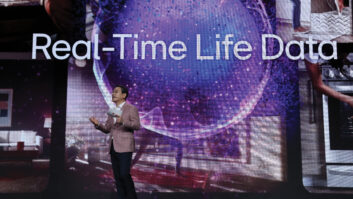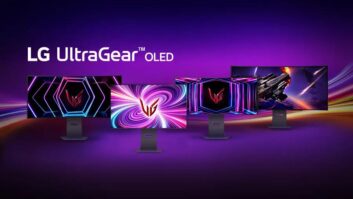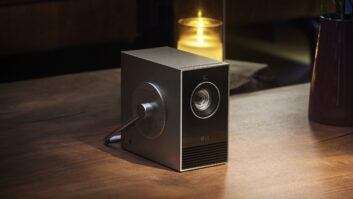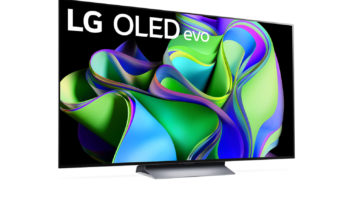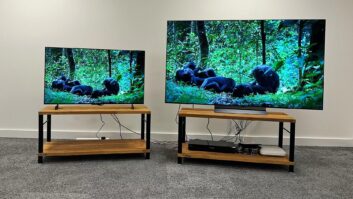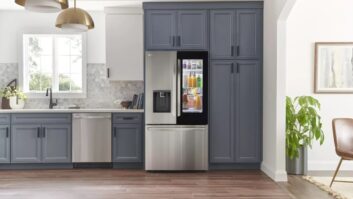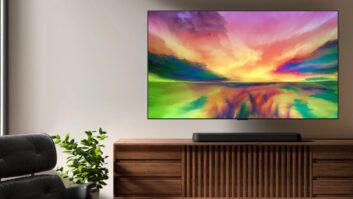Three Kitchen/Bath Industry Shows have passed since LG Electronics, then known stateside for its Zenith brand CE and Goldstar commodity ACs and microwaves, introduced an innovative, upmarket majap line under its own corporate moniker.
Since then, the company’s sleek refrigerators and washer/dryer pairs have become mainstays at Best Buy and some dozen major regional chains, while continuing to appear under alternative tags, thanks to a robust OEM business.
LG touted that success at this month’s K/BIS, where the company commanded a massive exhibit space matching those of mainstay U.S. manufacturers, and omnipresent signage at McCormick Place mirrored its marketplace presence.
Presiding over the proceedings was Michael Ahn, a 28-year LG veteran who was recently promoted from VP of global appliance sales to president/ CEO of the company’s newly centralized CE and appliance operations in the U.S. During the show, Ahn spoke with TWICE about America, major appliances and LG’s place in both. Edited highlights follow:
TWICE: You were based here, in Chicago, in the 1990s as VP of U.S. OEM sales. Has the country changed much since then?
Michael Ahn: No, there’s no difference, except for increased scrutiny of foreign residents due, unfortunately, to 9/11. But our country remembers your support during the Korean War, and now it’s our turn. The majority of Koreans support dispatching troops to Iraq.
TWICE: How does your U.S. strategy differ from other markets that LG competes in?
Ahn: The U.S. is the biggest and one of the most important markets. But it’s not simple. It’s dynamic and very diverse, so our thinking is that maybe we will do better by segmenting customers into several groups, based on age, income and other factors.
We also face severe competition here, so to be a winner in this market we need to differentiate ourselves with revolutionary products based on consumer needs. Product leadership is also important in trading up consumers as the market changes and evolves.
Two examples of that are our TV refrigerator and Tromm front-loading washer. We realized that people watch TV not only in the living room but also in the kitchen where there are space limitations, so we saw a need for a small, built-in LCD TV. With Tromm, we watched front loaders, a trade-up item, grow from 2 percent or 3 percent of total washer sales six years ago to almost 16 percent today. That’s why we entered the category.
TWICE: LG is one of the world’s largest appliance manufacturers. Do you have designs on becoming a major full-line supplier here, like a Whirlpool for example?
Ahn: No, our strategy is to be a premium niche market player in the U.S. We want to be strong in some segments, but we don’t want to sell everything. We can’t. Our resources are limited. Nor do we want to be a super-premium brand like Viking. We want to focus on high-end refrigerators and washers — for the time being.
TWICE: There had been some talk that LG was looking at expanding its market share and product portfolio through an acquisition.
Ahn: No, that’s not true. We feel that it is better to invest in ourselves rather than acquire another company.
TWICE: Are you able to leverage your CE strength when selling appliances to dealers who carry both brown and white goods?
Ahn: Those two areas are independent in our retail discussions. There are some synergies, but they are usually handled by different buyers and in many cases are sold to different consumers, namely electronics to men and appliances to women.
The synergies are more important in the areas of convergence and networking. LG is in a much better position to bring those types of products to market because we have several technologies in-house, including computing, consumer electronics, mobile phones and appliances. You’re already starting to see some of these convergence-type products from LG: the TV refrigerator, the combination microwaves with coffee makers, toasters and radios, and cellphones with cameras and camcorders.
The next step is home networking. We’re already testing a system in 3,000 homes in Korea, although we’re having some interference issues. It’s very important to avoid interference because people use a lot of devices at home, and we don’t want you accidentally turning on your neighbor’s air conditioner. But we expect we’ll have something to talk about by the end of this year.
TWICE: So, three years after the launch, are you satisfied with LG’s appliance penetration here?
Ahn: Yes, we’re happy with our performance to date.





